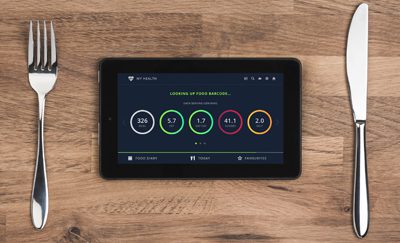By Kristina Kurkimilis, DO
July 2019
Whether you follow doctor’s orders or follow the latest fad diets, it’s so easy to quickly become overwhelmed by what is good or bad, healthy or unhealthy, right or wrong when it comes to food choices. We doctors always tell patients to “improve their diet,” or we write “Discussed diet with patient” in our clinic notes…but really, what does that mean? If you’re a middle aged patient with diabetes, hypertension, and high cholesterol, there are different recommended diets for each of these chronic illnesses, so what foods would be good to eat for all of them? Where is the best place to start on your lifelong journey of better eating?
The very first step I recommend to anyone looking to change their diet it to keep a food diary. Or, for the technologically inclined, download the free food tracking app called MyFitnessPal. For a month, track everything you eat or drink and, most importantly, how you feel. Note if you were really stressed before you picked up that donut in the breakroom, or write it down if you had bad diarrhea after the burger and fries you ate for lunch. Especially if you are plagued with a diagnosis like diabetes or hypertension, I urge you to also keep a diary of your sugars and/or your blood pressure to see how those are affected by the food you eat. You can learn so much by simply tracking (without judgment) what goes in your body. The reason I recommend tracking for a month (rather than a week, as some people suggest) is because you can start to see trends and patterns over a month; whereas tracking for only a week may tempt you to make different choices just so you “look good on paper.” A month is also enough time to create a habit, and the goal with nutrition should be to form good habits that are sustainable over a lifetime (not just to lose a few pounds).
Once you have tracked for a month or so, make small changes in your diet that are sustainable. For example, switch those sodas with bottled water. Instead of a sugary dessert every night, try something that’s naturally sweet, like fruit. If you’re always super-sizing your meal when you eat out, try to get the regular size; or instead of getting fries, try the salad for your side.
If you aren’t sure where to start with these decisions, your doctor is here to help! Don’t be afraid to bring your food logs to your next doctor’s visit. By that point, you will have already shown great commitment to change, and your doctor will be more than willing to help you figure out the next steps towards a sustainable diet. It is imperative to remember that your doctor is not only here to treat sickness, but to provide guidance to prevent sickness!
Grab your notebook or grab your smartphone and commit to 1 month of logging your food choices. The first step to better nutrition is to personalize your diet and eating habits, and what is more personal than keeping a “diary” of the factors that cause you to overeat, or the things that raise your blood sugar or blood pressure? Most “fad” diets will work for a short period of time. In contrast, a complete change of lifestyle may take longer but will be sustainable for an entire lifetime. If you are willing to put in the legwork in on the front end, then you will reap the results for a long time to come!

